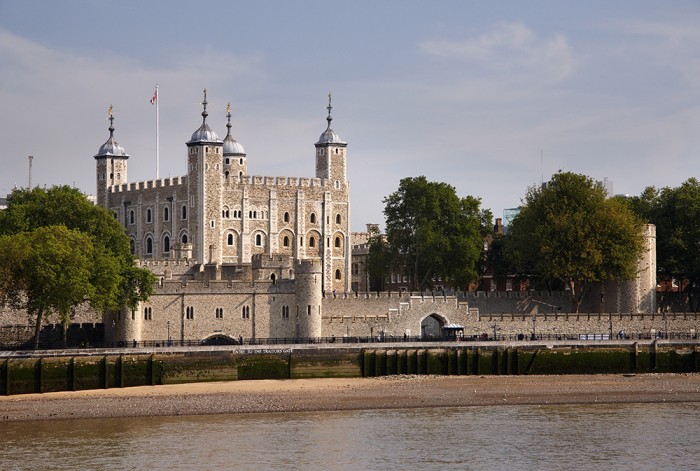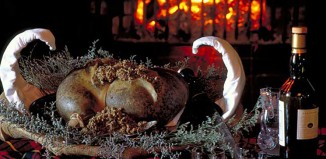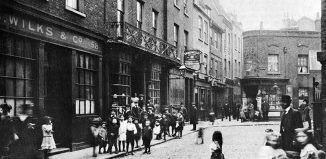London’s historic landmarks
London was founded in what is now the financial district, the Square Mile, after the Roman invasion of 43 AD. It was abandoned during part of the Dark Ages, when there was a Saxon port further along the river near where the West End is today, then reoccupied during the reign of Alfred the Great in the 9th century. After this it gradually developed into one of the most important commercial and financial centres in the world
You can learn all about this long history in as much or as little detail as you like at the excellent Museum of London, not far from St Paul’s Cathedral, in the north-west corner of the Square Mile.
Not much of the Roman or medieval city survives in the Square Mile today, but you can sense its history in the layout and names of streets and alleys like Bread Street or Ironmonger Row, where medieval tradesmen once lived and worked, or Walbrook, a road and ward named after a river which disappeared under the streets in the Middle Ages.
You can also see the past in the city’s few surviving medieval churches, which have had to withstand religious upheavals, frequent fires including the Great Fire of 1666, German bombs during World War II and voracious office developers in the decades since. Among the most interesting is the superb 12th century St Bartholomew-the-Great, part of an Augustinian priory before the Reformation, of which the original nave, thought far too large for a parish church, is still visible outside in the garden and graveyard.
Aside from these medieval survivors, you can also still see many of Christopher Wren’s replacements for the churches destroyed in the Great Fire, such as St Bride’s, with its famous wedding cake spire. The best-known of all Wren’s churches is St Paul’s Cathedral, built between 1675 and 1710 to replace what must have been one of England’s great medieval cathedrals. Visitors to St Paul’s today can enjoy its spectacular interior, and see the tombs of celebrated Britons including Wren himself, Nelson and the Duke of Wellington.
Another survivor from the medieval period is the Guildhall, now disfigured by Victorian and modern additions, but the seat of the city’s government since the Saxon period. Visitors to the Guildhall Art Gallery can see the remains of the Roman amphitheatre, over which it was built, suggesting that the Saxon folkmoot meetings that evolved into the city’s government were once held in the Roman ruins, another amazing example of the continuity of London’s history.
The principle building in the Square Mile that London’s medieval inhabitants would still recognise is the Tower of London, today a must-see for anyone with an interest in history, but for centuries the most feared institution in the land, where prisoners of the Crown were imprisoned and, if they were unfortunate, executed.
The Tower was founded by William the Conqueror, whose White Tower is still its most recognisable feature, rising up above the walls. It was given its name after being painted with whitewash during the 13th century, and is today home to the Royal Armouries and an 11th-century chapel. Visitors today can see Tower Green, where traitors were beheaded, the Bloody Tower, from where the young Edward V and his brother Richard, Duke of York disappeared mysteriously in 1483, and the Crown Jewels, in Waterloo Barracks.
The Tower is reputedly haunted by many of its victims, including Anne Boleyn, the Princes in the Tower, and the ghost of a bear. There was a menagerie of unusual animals here for several centuries and the ghostly bear scared a 19th century soldier so much when it appeared before him in the Martin Tower that he died of shock a few days later.
Beside the Tower is Tower Bridge, a magnificent piece of overblown Victorian architectural extravagance, with elaborate turrets and decorations that conceal some ingenious engineering which drives the mechanism that allows the bridge to open so that tall ships can pass through. You can also climb the towers to the walkways high above the road, from where there are good views over London.
Throughout the Middle Ages the city developed in parallel with the royal and religious institutions at Westminster, where Edward the Confessor founded an abbey and established a royal palace in the 11th century. Westminster slowly became the permanent seat of government and is now dominated by the Gothic palace, home to the Houses of Parliament, with its huge clock tower housing Big Ben.
The present building was designed by Charles Barry and Augustus Pugin in the 1840s after fire destroyed all of the Old Palace save the 12th century Westminster Hall, an extraordinary medieval building with a superb 14th century wooden hammer-beam roof. Sadly, for most of the year you will only be able to glimpse it if you visit one of the public galleries to watch parliamentary proceedings, but during the summer parliamentary recess there are guided tours of the palace.
Right across Parliament Square stands Westminster Abbey, where most English monarchs have been crowned since William the Conqueror in 1066. The interior is designed in a mixture of styles ranging from the early English Gothic of the 12th and 13th centuries to Henry VII’s 16th-century chapel.
Here you can also see the Coronation Chair on which Kings and Queens have been crowned since Edward I at the end of the 13th century, and the graves of every monarch from Henry III to George II, along with dozens of monuments to the great and good of British history.
From Parliament Square, Whitehall runs north towards Trafalgar Square past government buildings including the Prime Minister’s residence in Downing Street. The district is named after Whitehall Palace, built in the 16th century by Cardinal Wolsey and seized after his downfall by Henry VIII. It was destroyed by fire in 1698, apart from Inigo Jones’ magnificent Banqueting House. Here you can still admire the magnificent Rubens ceilings, which date from the 1630s, painted with images designed to convey the power and majesty of the Stuart Kings James I and Charles I. With surely deliberate irony, it was outside this room that Charles was beheaded in 1649.
London is a far friendlier place for the royal family today. The Queen’s main residence is now Buckingham Palace, ten minutes’ walk west of Whitehall. Some of the state rooms are open to the public during the summer, when exhibitions of works drawn from the extensive royal art collection are held in Queen Victoria’s Picture Gallery.








